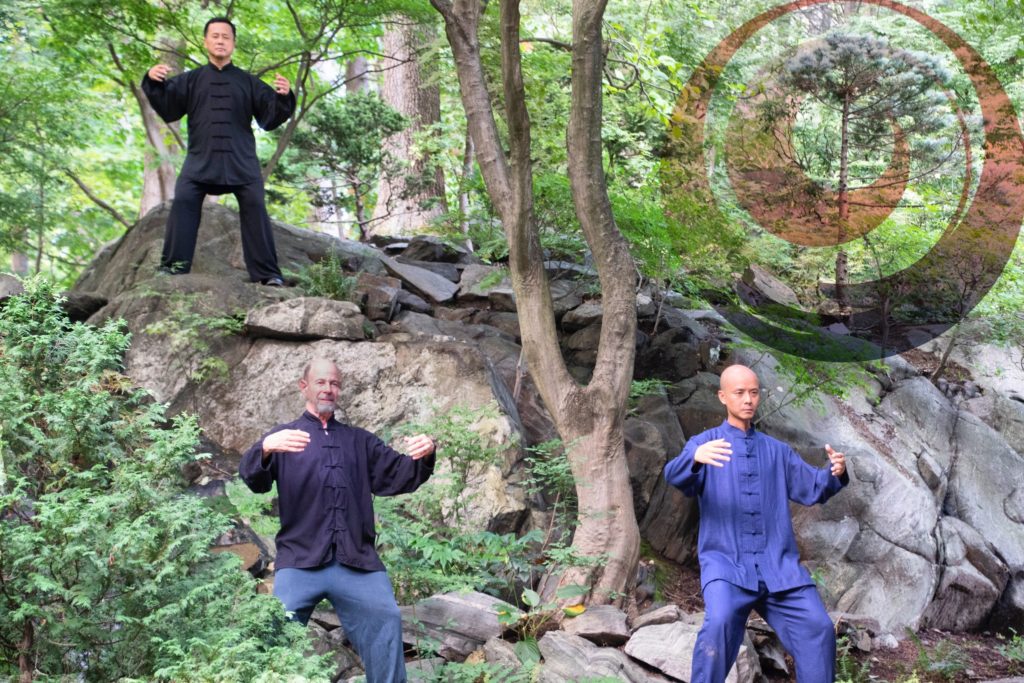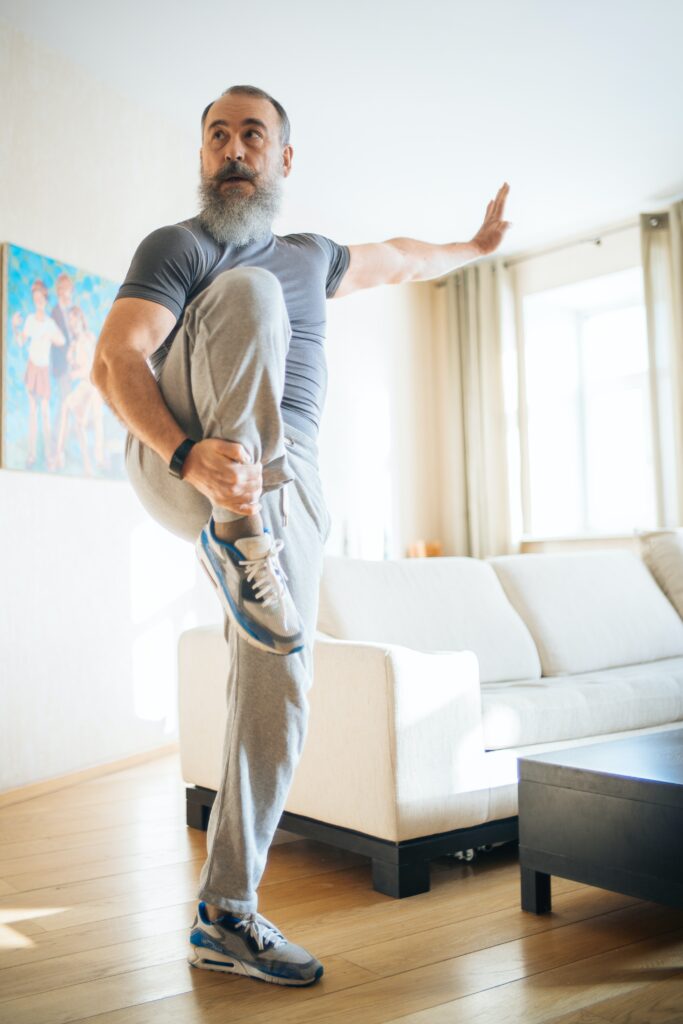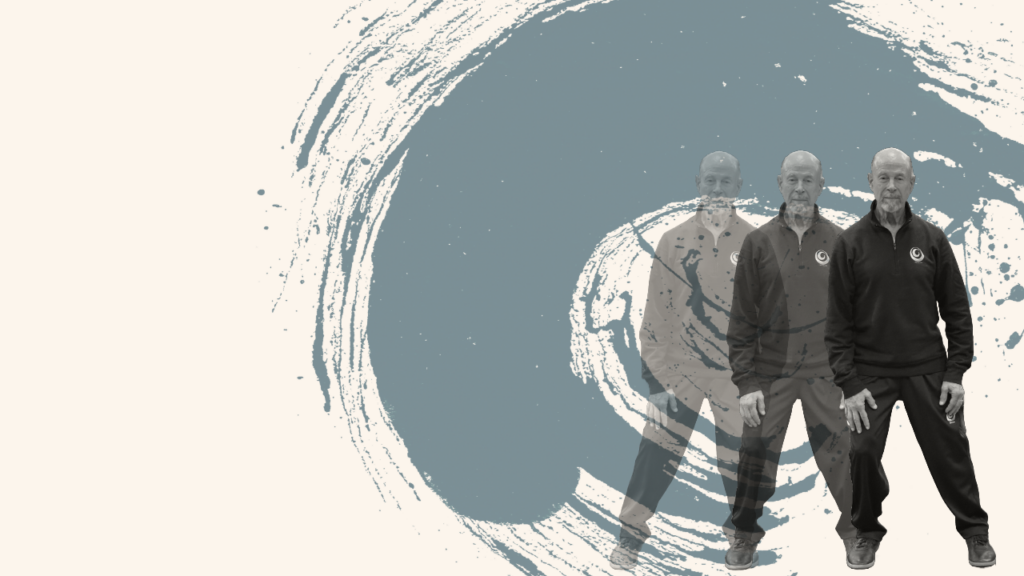10-Step Tai Chi Routine for Stress Relief

Let’s face it, there are stressful signals all around us. It seems as if all our media is full of news about Covid-19. We’re advised to stay home, not go out and if we do go out, we have to keep safe distances from people. We have to wash down all packages, wash our hands for at least 20 seconds, and in certain parts of the country, people can’t even buy toilet paper! Stress and anxiety levels are reaching alarming heights and people are looking for ways to lessen the load.
I suggest a vacation. A special getaway that will help you relieve your stress and regain your focus. The best part is that you can enjoy this vacation from anywhere you may find yourself.
What is Meditation?
We’ve all probably heard the word ‘meditation’ at some point of our lives but have any of us looked up the definition? According to Wikipedia, Meditation is a practice where an individual uses a technique – such as mindfulness, or focusing the mind on a particular object, thought, or activity – to train attention and awareness, and achieve a mentally clear and emotionally calm and stable state. According to a recent study nearly 36 million adults say they meditate at least once a week. Most people in the study stated that they received emotional and even physical benefits from practicing consistently. Which would explain why the number of people who use meditation has increased more than threefold in the last 10 years.
How do you Meditate?
The greatest part is that meditation is something you can do on your own, in your home at your own time without purchasing a thing. All you need is yourself, a comfortable cushion or chair and your mind. Too hard? Not for you? Tried it and couldn’t sit still, couldn’t clear your mind. Well, that may be true, but if you’re feeling stressed out or fidgety, stuck in social isolation, you may want to try it or revisit it as it is proven to reduce stress and recharge your depleted energy. It can make you feel good.
Let’s address some issues many of us have had with trying to meditate.
If you’ve ever had a problem meditating, you most likely had either trouble sitting still for a while or clearing your mind. The most difficult thing to do is to try to sit and not think. We all have a tendency to become distracted, to let our mind drift and not to focus. Often referred to as the “monkey brain” we find it hard to let go as our mind is constantly working, or we’re thinking of something and we start to become distracted. The more you try to let go, the more difficult it will be to let go. It’s kind of like hearing a song you hate and yet the damn tune and lyrics keep popping up in your head. You become obsessed and totally distracted. And you can’t get rid of it!
Here’s some good news. You can learn to meditate and you can learn to open your mind and clear it of distractions. The techniques are called “tricking the monkey brain”. Once you become distracted from the distractions in your mind, you can relax, open up and actually meditate.
Let’s look at how to clear our mind and distract the monkey brain. To do this, let’s try a simple form of meditation. As we do, I’ll provide you with some methods to train the monkey brain. So, review the instructions below and then go ahead and try to meditate. When starting out, see if you can do this for about 5 minutes. Then gradually increase the time to about 15 minutes. The important point here is to try.
Simple 10-Step Meditation Routine
- Find a comfortable place where you can meditate. This can be your bedroom, a family room, any place where you can find some escape from the normal noise of your home or apartment. You can try meditating sitting on the floor with legs crossed, on a cushion or on a chair. The main criteria is that you are comfortable.
- Now let’s consider how to sit. Posture is important in that if you slouch or lean, you will not allow your energy to flow. So, sit comfortably with your head floating up. To do this correctly, locate the center of the top of your head where all the head bones meet. In babies, this was the area of the Fontanel. Practitioners of Taoist meditation call it the Bai Hui and is sometimes referred to as the Crown Point. Once you locate it, tap it. Then imagine that you have a string attached to it and the string is pulling up so that the head raises straight. The chin is tucked slightly down, not forced. If done correctly you’ll feel a slight stretch in the neck.
- With your head floating up, allow the body from the shoulders on down to relax.
- Place your hands in a comfortable position. Most often this is flat on your thighs or knees.
- Let’s talk about breathing while meditating. I work on the method of “circular breath”. This is a method in which we use the mind to follow our breath.
- To create a circular form of breathing, inhale through your nose and with your mind, follow the breath to the lower dantian. This is the theoretical center of your body located about 2 inches (5 cm) down from your navel. It’s centered from your front to the small of your back. As you inhale, try to breathe with your diaphragm by gently pushing the belly out and down.
- When you exhale follow your breath from the dantian down to the lower hip girdle to your spine, up the spine to the top of your head and out your nose. That completes the cycle of breathing, the circular breath.
- If you focus on the circular breath while meditating you have begun one of the first devices to trick the monkey brain. So, let’s continue.
- With your head floating up and your hands in a comfortable position, relax your shoulders and breathe normally. At this point you will close your eyes and open them slightly so there is a slit in which you can see. Find a spot in front of you and through your slit eyes focus on it.
- As you focus on the spot in front of you concentrate on following the circular breath. You’ve begun to meditate and to keep the mind still by tricking your wandering monkey brain.
- Another trick if you find your mind drifting: go back to focusing on the crown point, floating the head up by saying to yourself, “my head is floating up, my head is floating up, I am relaxed, I am relaxed.” Repeat three to four times and then focus on the crown point, then the head floating up. Next focus on relaxing from the shoulders down. Repeat this focus as often as you need. Again, by doing this you are keeping in the moment while continuing to meditate and tricking the monkey brain.
- On more trick: try counting to 10 3 times in a row, don’t try to coordinated the count with your breathing in and out, just count. Then try counting to 10 4 times in a row, 5 times in a row, etc. The idea here is to keep focused. By doing the 10 count multiple times, you have to be mindful and therefore know if, while counting you’re at the 2nd, 3rd or 5th
- Finally, just let go and relax, your mind will relax while you continue meditating, focusing on the spot in front of you. If you find yourself thinking about something, try focusing on one of the methods above to trick the monkey brain back to the moment of meditation. To relax even more, try to slow your breath down as you practice the circular breath. This will be easier if you use your belly/diaphragm on your inhale as mentioned earlier. Don’t force anything, just relax and enjoy the peace.
So, now try to perform the meditation as I described. Start off with a short interval and use following the circular breath technique. As you gradually increase your meditation time you might want to incorporate any of the other methods discussed in items 6-9.
Let me know how this worked for you. I’d appreciate your comments. If you have any suggestions techniques you’d like to share, please do so in the comment section below.
About the Author: Alan Bandes has been teaching Chen Style Tai Chi for over 2 decades while studying under Master Ren Guangyi. He teaches in-person, and as an instructor for Chi Force Community where he offers live-streamed classes.







Responses